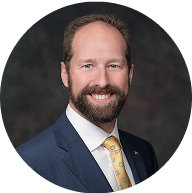My understanding is that if I take immediate retirement at MRA before 62, then I will: 1) get the FERS Supplement to my FERS annuity; and 2) but I will not get COLAs until I turn 62. Assuming this is correct, does that mean that I would permanently loose those COLAs? For example, if I retire at 57 and assuming there are 2% COLAs for each of the five years until I turn 62, would my FERS annuity be down 10% for the rest of my life? If so, this is a major negative about retiring before 62 that does not seem to be well known or understood. Thanks!
In order to be eligible for retirement under FERS, an employee must meet certain guidelines.
A federal employee must attain their Minimum Retirement Age (MRA) and have thirty (30) years of creditable service to be eligible for an immediate, unreduced pension.
To answer Dave’s questions, we begin my drawing out on a sheet of paper his retirement income timeline.
In this retirement income timeline we have plotted various ages as financial weigh points.
- Age 57 Dave is eligible for retirement under MRA and 30 Rules
- Age 62 Dave’s FERS Supplement Stops and he is first eligible to receive REDUCED Social Security Benefits
- Age 66 Dave is eligible for his full unreduced social security benefits
- Age 70 the year that Dave is eligible for his full social security benefits PLUS the “bonus” he will receive for having delayed taking those benefits until age 70
- End of financial plan.
Let’s look at each of these weigh points and see what the income is for Dave in this scenario.
Age 57 | MRA and 30 Years of Creditable service
At age 57 Dave is eligible for retirement under the Federal Employee Retirement System because he has reached his Minimum Retirement Age and has 30 years of creditable service under FERS.
When Dave retires, he will receive the following income:
- His FERS Pension
- His Special Retirement Supplement
In addition to his FERS Pension, as mentioned above, Dave is eligible for the FERS Special Retirement Supplement.
The FERS Special Retirement Supplement is for Federal Employees who are able to retire with an immediate pension before age 62.
The FERS Special Retirement Supplement begins when you retire, if you are younger than age 62. At age 62 the FERS Special Retirement Supplement ceases automatically. Don’t worry, the Office of Personnel Management probably won’t forget to ensure it is automatically turned off for you if you are receiving this.
The reason that the FERS Special Retirement Supplement stops at age 62 is because that is the age that you are first eligible to file and receive your social security benefits.
During your working years, unlike CSRS co-workers, as a FERS Employee you paid into social security during your working years.
Remember, just because you are eligible to turn on your social security at age 62 does not mean financially that you should. Plan for before you make this decision you read our article about the pros and cons of starting social security early.
The second requirement is that you must have a normal immediate retirement, not an early retirement (MRA+10). This means you must have 30 years of creditable service and meet your MRA. Or you can have 20 years of creditable service and be age 60.
And while you can seek a normal immediate retirement at age 62 with 5 years in service – the Supplement is only paid until age 62.
If you retired at 62 with 5 years of service, you would not get this benefit.
Age 62 | The FERS Special Supplement Stops
At age 62, the FERS Special supplement stops automatically. As we mentioned, there is no form to complete and you do not need to notify OPM.
This is the year that Dave is first eligible to receive his social security benefits at a REDUCED amount.
The reduced benefits are reduced, for life. If Dave chooses to draw his social security early at age 62 he will not then, later, receive his full benefits when he reaches the full retirement age (we are assuming age 66). If you draw social security early, at age 62, it is permanently reduced.
This is really important to understand because one of the questions/comments we get from Federal Employees when we meet with them one on one is, “I am going to start drawing social security benefits at age 62 so that I get the most money over the longest length of time.”
Unless you are terminal – and this is a completely different conversation if you are – we rarely see this pencil out. Make sure that you do the math on this before making a permanent decision.
Cost of Living Adjustment (COLA)
A cost of living adjustment is payable to Federal Employees AND their survivors on pension income when the annuitant (person receiving the pension) reaches age 62. There are some exceptions like disability, survivor benefits, and other special provision retirements but for most Federal Employees, they will receive a COLA at age 62.
Under the Federal Employees Retirement System (FERS) and FERS Special, the COLA will be 1.3 percent for those who have received benefits for at least one year.
Age 66 | Full Retirement Age for Social Security
In our example, for Dave we are using age 66 as his Full Retirement Age (FRA) for Social Security benefits. However, FRA is based on the year that you were born. Make sure that you verify which age constitutes your FRA:
Full Retirement and Age 62 Benefit By Year Of Birth
Year of Birth 1. | Full (normal) Retirement Age | Months between age 62 and full retirement age 2. | At Age 62 3. | |||
A $1000 retirement benefit would be reduced to | The retirement benefit is reduced by 4. | A $500 spouse’s benefit would be reduced to | The spouse’s benefit is reduced by 5. | |||
66 | 48 | $750 | 25.00% | $350 | 30.00% | |
66 and 2 months | 50 | $741 | 25.83% | $345 | 30.83% | |
66 and 4 months | 52 | $733 | 26.67% | $341 | 31.67% | |
66 and 6 months | 54 | $725 | 27.50% | $337 | 32.50% | |
66 and 8 months | 56 | $716 | 28.33% | $333 | 33.33% | |
66 and 10 months | 58 | $708 | 29.17% | $329 | 34.17% | |
67 | 60 | $700 | 30.00% | $325 | 35.00% | |
| ||||||
Age 70 | Maximum Social Security Benefits
At age 70, you may receive the maximum benefits under age 70.
Each year you delay drawing your social security benefits beyond your Full Retirement Age, you may receive incremental increases to your benefits.
If Dave is anticipating that life should go as it should and he has a long, healthy life span in front of him than by waiting until age 70 he will have maximized his social security benefits.



